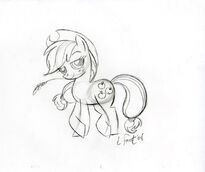Download presentation
Presentation is loading. Please wait.
1 Phlebotomy Simplified
Third Edition Chapter 8 Venipuncture Procedures Copyright © 2019, 2013, 2008 Pearson Education, Inc. All Rights Reserved
2 Chapter Learning Objectives (1 of 4)
8.1 Describe the patient identification process. 8.2 Explain the use of venipuncture supplies in a typical venipuncture procedure. 8.3 Describe when hand hygiene and gloving procedures should be used.
3 Chapter Learning Objectives (2 of 4)
8.4 Identify the most appropriate sites for venipuncture and which sites may not be used. 8.5 Describe how to apply a tourniquet to a patient’s arm and its effects on the venipuncture process. 8.6 Describe the process for cleansing a venipuncture site.
4 Chapter Learning Objectives (3 of 4)
8.7 Describe the detailed steps of a venipuncture procedure. 8.8 Describe the order of draw for collection tubes. 8.9 Describe the importance of timed, fasting, and STAT specimens.
5 Chapter Learning Objectives (4 of 4)
8.10 Explain at least three potential errors related to the incorrect use of venipuncture supplies or equipment such as alcohol pads, tourniquets, specimen tubes, and needles Describe what to do if a patient faints, feels nauseous, or has convulsions during a venipuncture procedure.
6 Blood Collection Process (1 of 4)
Essential steps common to all procedures. Each step must be evaluated carefully in a detailed manner. Take care not to omit any of the essential components.
7 Blood Collection Process (2 of 4)
Steps Prepare work area, review test orders, prepare yourself through hand hygiene. Approach patient and introduce yourself. Identify and position patient. Assess physical disposition (diet, allergies, etc.). Select and prepare equipment/supplies.
8 Blood Collection Process (3 of 4)
Steps Find, prepare, cleanse puncture site. Choose and perform a venipuncture method. Collect samples in the correct order. Discard contaminated supplies. Label samples and reconfirm patient’s identity.
9 Blood Collection Process (4 of 4)
Steps Assess patient to assure bleeding has stopped. Perform hand hygiene after procedure. Manage and document special circumstances. Prioritize patients and specimen tubes. Transport and/or store specimens appropriately.
10 Using Standard Precautions (1 of 2)
Overview Hand hygiene and glove use should be routine procedures and practiced for each patient. Vital for well-being of the patient and health care worker.
11 Using Standard Precautions (2 of 2)
Overview Perform hand hygiene and gloving when in visual contact with each patient, before beginning, then glove removal plus hand hygiene after the procedure. A clean, pressed uniform or “scrubs” with a laboratory coat is comfortable and instills professionalism and hygiene.
12 Mentally Preparing for the Patient Encounter (1 of 2)
Prepare and assemble PPE, supplies, test requests, pen, and appropriate patient information. Present a positive, professional appearance and temperament. Take a deep, cleansing breath. Identify the patient properly. Wash or sanitize hands and then put on gloves.
13 Figure 8-2
14 Figure 8-3
15 Mentally Preparing for the Patient Encounter (2 of 2)
If patient information is incomplete, the health care worker may not be able to identify patient correctly, or may not know which tubes to use to collect the blood. In such cases, obtain assistance from a laboratory supervisor or a nurse before collecting the sample.
16 Assessing, Identifying, and Approaching the Patient
Test Requisitions Transmitted electronically or on paper If you don’t understand the test ordered, consult a lab technician or nurse before the phlebotomy procedure. Knowing which tests are requested helps to prepare patient appropriately and collect the specimen in appropriate tubes and in the correct order.
17 Patient Identification Process (1 of 17)
The Joint Commission recommends: Using “at least two ways to identify patients.” Name Date of birth Government-issued ID with photograph, e.g., a driver’s license
18 Patient Identification Process (2 of 17)
Identification not to be used include: Hospital room numbers Bed tags Charts in holders near a patient or on a table Tags on IV equipment
19 Patient Identification Process (3 of 17)
Three-step Process Ask the patient to state and spell his or her full name and state his or her birth date. For example: “Sir, please state your full name and date of birth and spell your last name.”
20 Patient Identification Process (4 of 17)
Three-step Process Compare the information stated with the patient’s ID band. Confirm the information with the sample labels and/or requisitions. If all three identification steps indicate the same identity, proceed with the collection procedure.
21 Figure 8-4
22 Figure 8-5
23 Figure 8-6
24 Patient Identification Process (5 of 17)
Inpatient Identification Hospitalized patients (except those just entering an emergency room) Patients must wear ID armband with first and last name and unique hospital number. A three-way match must include patient’s statement and spelling of his or her name and birthdate or address, the ID wristband, and the test requisition.
25 Patient Identification Process (6 of 17)
Patients Who Are Sleeping A patient should be awakened to have their identity verified before blood is collected. Verbal information should be compared with information on the identification bracelet, and the requisition/labels.
26 Patient Identification Process (7 of 17)
A nurse, relative, or friend may identify patients in these circumstances: Unconscious or comatose Cognitively impaired Too young to identify themselves Cannot speak health care worker’s language Have sensory impairments such as difficulty hearing instructions
27 Patient Identification Process (8 of 17)
Emergency Room Patient Identification Patients can enter ER unconscious and/or unidentified. Temporary master ID is assigned (hospital number on wristband) until a positive ID can be made. Temporary identification number cross-referenced to permanent number to ensure correct identification.
28 Patient Identification Process (9 of 17)
Identification of Neonates and Babies Confirm the following elements: Name of baby, if designated Date of birth Baby’s gender Unique ID number Mother’s last name, or last name used at registration
29 Patient Identification Process (10 of 17)
Identification of Neonates and Babies A nurse or relative may confirm identify. ID band often placed on the ankle. Neonates do not always have a given name when born, so ID bands typically linked to birth mother. Use extra caution in cases of multiple births to not confuse identity of siblings.
30 Patient Identification Process (11 of 17)
Outpatient/Ambulatory Patient Identification Ambulatory patients usually come to blood collection area from waiting room. ID process: verbally asking for name, birth date, and to present identification. Positive identification using three-way match can occur in same manner as with hospitalized patients.
31 Patient Identification Process (12 of 17)
Physical Clues for Assessing Patient Observe patient’s disposition by being alert and listening carefully. A clue about something unusual may come after talking to patient or after the identification process has taken place.
32 Patient Identification Process (13 of 17)
Physical Clues for Assessing Patient Diet, alcohol, medications, exercise, and/or smoking Tendency to faint Latex sensitivity Nausea/vomiting Seizures
33 Patient Identification Process (14 of 17)
Physical Clues for Assessing Patient Stress Age Arm preference Weight
34 Patient Identification Process (15 of 17)
Identify Errors and High-Risk Situations Multiple patients who are unconscious in ER simultaneously Siblings or twins Newborns who have not been named Common or similar sounding names Multiple patients sharing common room
35 Patient Identification Process (16 of 17)
Approaching the Patient Politely knock on patient’s door. Introduce yourself and state: Your name Your department Explain that you have come to collect a blood sample.
36 Patient Identification Process (17 of 17)
Approaching the Patient Explain the procedure as supplies are being set up or as gloves are put on. As supplies are being readied and vein being palpated, health care worker may try to alleviate some of patient’s fears.
37 Equipment Selection and Preparation (1 of 10)
Supplies for Venipuncture Being prepared means having all supplies readily available, organized, and in a clean, clutter-free cart, tray, or workspace. Supplies differ according to method used and tests ordered.
38 Figure 8-11 Ways to Transport Phlebotomy Supplies. A–D demonstrate several commercially available carts and trays ranging from basic trays to the use of mobile phlebotomy carts. Courtesy of MarketLab:
39 Equipment Selection and Preparation (2 of 10)
Patient Positioning Make the patient comfortable and safe. Choose east hazardous site for blood collection. Know about useful devices and the positions and locations of veins.
40 For long description, see slide 128: Appendix A
Figure 8-12 Devices to Assist in Positioning of the Patient A. This is a typical phlebotomy chair with adjustable arms. B. Recliner style chairs with adjustable arms and/or shelves are available in a variety of styles, often with electronic height adjustments to facilitate comfort and safety for the patient and health care worker. C. This is an example of an extra wide chair for large and obese patients. D. A phlebotomy wedge is available to help stabilize the patient’s arm. It has an antimicrobial coating that does not absorb liquids and should be wiped clean/decontaminated after each use. Courtesy of MarketLab: For long description, see slide 128: Appendix A
41 Equipment Selection and Preparation (3 of 10)
Venipuncture Site Selection Most common site for venipuncture is antecubital area of the arm just below the bend of the elbow. Median cubital vein, sometimes called median vein, is preferred for venipuncture because it is reported to be less painful and less prone to injury.
42 For long description, see slide 129: Appendix B
Figure 8-13A Venous Circulation A. Venous circulation of the right arm, abdomen, and chest. For long description, see slide 129: Appendix B
43 For long description, see slide 130: Appendix B
Figure 8-13B B. Phlebotomists must have an understanding of the anatomical positioning of veins, arteries, nerves, muscles, and bones in both the right and left arms. For clarity, this diagram does not show bones and only shows hints of muscle placement, but it clearly identifies the approximate positioning of veins (blue), arteries (red), and nerves (yellow) in relation to each side of the body. Each patient has an individual vein orientation or pattern, so phlebotomists should learn to palpate and select the most suitable and safest vein for access that has the least risk for complications. For long description, see slide 130: Appendix B
44 Equipment Selection and Preparation (4 of 10)
Venipuncture Site Selection Second choice of vein is the cephalic vein (outer edge of the arm). Last choice of vein is the basilic vein (on inner side of antecubital area). Hand veins may provide an alternate site for venipuncture.
45 Equipment Selection and Preparation (5 of 10)
Venipuncture Site Selection Veins on dorsal side (e.g., back side) of hands or wrists acceptable venipuncture sites if antecubital veins inaccessible. Ankle and foot veins (on dorsal or upper side) should not be used unless health care worker specifically trained and authorized to do so.
46 Equipment Selection and Preparation (6 of 10)
Venipuncture Site Selection If patient complains of severe pain during procedure, the needle must be removed immediately and procedure discontinued. Accidental arterial puncture can result in excessive bleeding and hematoma formation.
47 Figure 8-15 Vein Variations in the Hand and Arm
Vein patterns are different for every person. Learn to feel the veins prior to venipuncture, not just simply see them. The examples shown in this figure are from people of varying races, ethnicities, gender, and ages. Some veins are visible and others are not. Note the variations in skin tone and elasticity or tightness, muscle mass, fatty tissue, and bone structure. For health care workers, the responsibility is to find the most suitable vein that has the greatest likelihood for a successful and safe venipuncture by relying on the feel of the vein, not simply on how it looks.
48 For long description, see slide 131: Appendix C
Figure 8-16 Dorsal or Backside of the Hand A. Veins on the dorsal/back side of the hand can be used for venipuncture. Note the arteries (red), veins (dark blue), nerves (yellow), and tendons (light blue). Keep these structures in mind when performing a venipuncture on the dorsal hand. B. Right hand of a 63-year-old female. For long description, see slide 131: Appendix C
49 For long description, see slide 132: Appendix D
Figure 8-17 Hand Vein Selection A. After applying a tourniquet, the phlebotomist feels for dorsal hand veins. B. Even though the veins are visible and palpable, they are more prone to rolling sideways during a venipuncture procedure. Note how the vein can be easily pushed to one side. C. Veins on the palm side of the wrist are not acceptable for venipuncture. For long description, see slide 132: Appendix D
50 Equipment Selection and Preparation (7 of 10)
Arm veins cannot be used for venipunctures if: Intravenous (IV) lines in both arms Burned or scarred areas Areas with a hematoma Cast(s) on arm(s)
51 Equipment Selection and Preparation (8 of 10)
Arm veins cannot be used for venipunctures if: Thrombosed veins Edematous arms Mastectomy on one side only Mastectomy on both sides
52 Equipment Selection and Preparation (9 of 10)
Hard-to-Find Veins Warming the puncture site Facilitates phlebotomy by increasing arterial blood flow to the area Commercially available warming devices Clean towel/washcloth heated to 42°C Position arm in downward position With fingers pointed downward (1-2 min) Allows blood to fill veins to capacity
53 Equipment Selection and Preparation (10 of 10)
Tourniquet Application Causes veins to be more prominent and blood to fill the veins Soft rubber tourniquet about 1 inch (2.5 cm) wide and 15 to 18 inches (45 cm) long is most comfortable for patients, affordable, and easy to use.
54 Use of a Tourniquet and Vein Palpation (1 of 5)
After patient ID, hand hygiene, and donning gloves, select a clean latex-free tourniquet. Stretch ends of tourniquet around the patient’s arm about 3 to 4 inches (7.6 to 10 cm) above antecubital area.
55 Figure 8-20 Courtesy of MarketLab:
56 Figure 8-21
57 Use of a Tourniquet and Vein Palpation (2 of 5)
Hold both ends of the tourniquet in one hand; with the other hand tuck in a section next to the skin to make a partial loop with the tourniquet. Tourniquet should be tight but not painful to the patient. Do not leave it on for more than 1 minute.
58 Use of a Tourniquet and Vein Palpation (3 of 5)
Do not place it over sores or burned skin. Depending on policies of each health care facility, it may be placed over a hospital gown sleeve. Palpate the antecubital area to locate and select the safest vein.
59 Use of a Tourniquet and Vein Palpation (4 of 5)
Cleanse the area. Release tourniquet after needle puncture, when blood has begun to flow into the collection tubes. During venipuncture, release tourniquet with one hand, because the other hand will be holding the needle and tubes.
60 Use of a Tourniquet and Vein Palpation (5 of 5)
The partial loop should allow for easy release by the health care worker. Once released, it can remain loosely on the arm or surface of the work area (e.g., bed or blood collection chair) until the procedure is completed.
61 Figure 8-22
62 Cleansing the Puncture Site (1 of 2)
Identify patient properly. Wash or sanitize your hands using appropriate agents, dry them, and then put on gloves. Cleanse site thoroughly with a 70% isopropanol (isopropyl alcohol) pad.
63 Cleansing the Puncture Site (2 of 2)
Rub the site with the alcohol pad, using back-and-forth friction. If skin is particularly dirty, repeat process with a new alcohol pad. Air-dry site or dry it with sterile gauze.
64 Figure 8-23
65 Figure 8-24
66 Venipuncture Methods (1 of 2)
Evacuated Tube System and Winged Infusion System, or Butterfly Method CLSI recommends venipuncture specimens be collected with system that enables blood to flow directly into tubes. Evacuated tube systems and winged infusion systems are widely available, equipped with safety devices, and comply with CLSI recommendation.
67 Venipuncture Methods (2 of 2)
Syringe Method Syringes typically made of plastic with graduated markings denoting volume in milliliters. Useful for injecting fluids and medications Not recommended for routine venipunctures.
68 Performing a Venipuncture: Evacuated Tube Method (1 of 20)
After greeting, identifying, and assessing patient, cleanse hands and don gloves. Assemble equipment in the presence of the patient. Double check expiration dates and the integrity of all supplies. Offer to answer any questions.
69 Performing a Venipuncture: Evacuated Tube Method (2 of 20)
Prepare equipment according to manufacturer’s instructions. For winged infusion or butterfly apparatus, the smaller needle (1⁄2 to 3⁄4 inch in length and 21 to 22 gauge in diameter) comes attached to thin tubing with a Luer adapter for attachment to a tube holder.
70 Performing a Venipuncture: Evacuated Tube Method (3 of 20)
Position patient’s arm straight or slightly bent downward but comfortable manner. Apply the tourniquet and check for potential sites by palpating the vein.
71 Performing a Venipuncture: Evacuated Tube Method (4 of 20)
Feel for median cubital vein first; if it does not feel suitable, remove the tourniquet and try the other arm. Cephalic vein is the next choice. Choose a vein that feels the fullest.
72 Performing a Venipuncture: Evacuated Tube Method (5 of 20)
If necessary, warm the site or lower the arm further in a downward position to pool venous blood. Cleanse patient’s skin with alcohol pad in a back-and- forth motion. Allow site to air-dry; do not blow on it.
73 Figure 8-26
74 Performing a Venipuncture: Evacuated Tube Method (6 of 20)
Do not allow the patient to vigorously clench their fist or “pump” their fist because it can affect laboratory values. Caution patient that he or she will “feel a stick” and ask the patient to remain still while you begin the procedure.
75 Performing a Venipuncture: Evacuated Tube Method (7 of 20)
Remove needle cap carefully (it cannot touch anything that would contaminate it). Position needle parallel or running in same direction as the vein. Insert needle quickly, with bevel side up at a 30-degree angle (or less) with the skin.
76 Performing a Venipuncture: Evacuated Tube Method (8 of 20)
A slight “pop” should be felt as the needle enters the vein. Press the evacuated tube gently onto the sheathed needle.
77 Figure 8-28
78 Performing a Venipuncture: Evacuated Tube Method (9 of 20)
Blood should begin to flow. If blood does not flow, palpate gently above puncture to feel for vein and possibly reorient needle very slightly. Do not probe! Release the tourniquet.
79 Performing a Venipuncture: Evacuated Tube Method (10 of 20)
If more collection tubes are needed, carefully remove first tube from holder with a gentle twist-and-pull motion and gently push second evacuated tube into holder so tube closure is punctured by the inside needle and blood can enter.
80 Figure 8-29
81 Performing a Venipuncture: Evacuated Tube Method (11 of 20)
Allow the blood to flow into the tube until it stops so that the proper dilution of blood to additive can occur.
82 Performing a Venipuncture: Evacuated Tube Method (12 of 20)
During tube transfer, be mindful to: Hold needle apparatus firmly and motionlessly so needle remains comfortably in vein during tube changes. Follow the correct order of draw. Blood stops flowing between tube changes because of inner needle design, which allows a sleeve to block flow if it is not in use.
83 Performing a Venipuncture: Evacuated Tube Method (13 of 20)
During tube transfer, be mindful to: Experienced health care workers can gently mix/invert a full tube in one hand while holding needle apparatus in the other hand waiting for another tube to fill. Some health care workers switch hands to use dominant hand during tube exchange.
84 Performing a Venipuncture: Evacuated Tube Method (14 of 20)
Use the method recommended by your health facility, supervisors, or instructors. Find approach most reliable, safe, and comfortable for both patient and you.
85 Performing a Venipuncture: Evacuated Tube Method (15 of 20)
When all tubes have been filled and removed from the holder, withdraw the needle, move it away from the patient, and hold a gauze pad over the site.
86 Figure 8-30
87 Performing a Venipuncture: Evacuated Tube Method (16 of 20)
Safety device that covers needle should be used according to manufacturer’s instructions. Activate or cover the needle once it has been withdrawn or manipulate a device that renders the needle blunt before withdrawal from the vein. Instruct patient to apply pressure to the site using the gauze.
88 Figure 8-31
89 Performing a Venipuncture: Evacuated Tube Method (17 of 20)
If needed, continue gentle inversion of the specimen tubes for complete mixing of additives with the blood. Remember: do not shake the tubes. Dispose of entire needle apparatus in a puncture-proof biohazard container.
90 Performing a Venipuncture: Evacuated Tube Method (18 of 20)
Apply pressure until bleeding has stopped. Keep an eye on patient for signs of syncope. Label specimens appropriately. Ask patient to reconfirm identity on the labeled specimens. Dispose of contaminated supplies and equipment.
91 Figure 8-32
92 Performing a Venipuncture: Evacuated Tube Method (19 of 20)
Double-check bleeding has stopped. Apply a bandage, if appropriate. Wash or sanitize your hands. Thank the patient for cooperating.
93 Performing a Venipuncture: Evacuated Tube Method (20 of 20)
Depart with all blood samples and all remaining supplies. Do not leave anything at patient’s bedside. Deliver the samples to the appropriate locations for laboratory testing.
94 Performing a Venipuncture: Winged Infusion/Butterfly Method (1 of 5)
Most helpful in following patients: Those having tiny veins Pediatric or geriatric patients Patients who may many needlesticks Those patients in restrictive positions (traction, severe arthritis)
95 Performing a Venipuncture: Winged Infusion/Butterfly Method (2 of 5)
Most helpful in following patients: Those with severe burns Those with fragile skin or veins Those patients who have specifically requested it due to less pain Those with short-term infusion therapy
96 Performing a Venipuncture: Winged Infusion/Butterfly Method (3 of 5)
Requires training and practice because of small tubing attached to the needle. Tubing contains air which enters first tube, thus it will underfill by 0.5 mL. Because this would affect the additive-to-blood ratio in some tubes, a nonadditive tube should be filled first.
97 Performing a Venipuncture: Winged Infusion/Butterfly Method (4 of 5)
After first tube, order of tube draw can follow the usual order recommended. Needle apparatus tends to hang loose on end of tubing and may recoil unexpectedly. Activate safety device immediately after withdrawing the needle.
98 Performing a Venipuncture: Winged Infusion/Butterfly Method (5 of 5)
Failure to activate safety devices correctly as described by manufacturers may result in higher incidence of needlestick injuries.
99 Figure 8-40
100 Performing a Venipuncture: Syringe Method (1 of 10)
Syringes are not routinely used for venipuncture because of: Safety concerns Accidental cross-contamination of anticoagulants as blood is injected into multiple tubes Excessive/forceful withdrawal of blood such that sample adversely affected Potential clotting in the syringe
101 Performing a Venipuncture: Syringe Method (2 of 10)
Using blood transfer device minimizes some of these problems. Syringes are useful for veins that collapse easily because the pressure withdrawing the blood can be more gently controlled.
102 Performing a Venipuncture: Syringe Method (3 of 10)
Follow same instructions for greeting, assessing, and identifying the patient, cleansing hands, and donning gloves.
103 Performing a Venipuncture: Syringe Method (4 of 10)
Assemble supplies in the presence of the patient and offer to answer any questions. Prepare equipment according to manufacturer’s instructions. Use syringe needle with safety device. Check antecubital area for suitable vein and apply tourniquet. Cleanse the puncture site.
104 Performing a Venipuncture: Syringe Method (5 of 10)
Before the needle is inserted, move the plunger back and forth to allow for free movement and to expel all air. Use same approach to needle insertion as used for evacuated tube method. Try to orient the syringe so that the graduated markings are easily visible.
105 Performing a Venipuncture: Syringe Method (6 of 10)
Once the needle is in the vein, draw back the syringe plunger slowly until the required amount of blood is drawn. Try not to accidentally withdraw needle while pulling back on plunger, and do not pull hard enough to cause hemolysis (rupture of cells) or collapse of the vein.
106 Performing a Venipuncture: Syringe Method (7 of 10)
After tourniquet release and collection of appropriate amount of blood, withdraw entire needle/syringe assembly quickly.
107 Performing a Venipuncture: Syringe Method (8 of 10)
Activate safety device immediately, depending on manufacturer’s specifications. Remove needle or winged collection set and discard it appropriately. Immediately fill the evacuated tubes for testing using a syringe transfer device.
108 Performing a Venipuncture: Syringe Method (9 of 10)
Carefully watch as tube fills until it stops, which will ensure correct ratio of blood to additive. Remove first tube and replace it with the next one. Tubes should be filled in same order as for the evacuated tube method.
109 For long description, see slide 133: Appendix E
Figure 8-44 Blood Transfer Device A. This image shows the health care worker inserting a tube into the blood transfer device after the needle (with safety device activated) was removed from the syringe and disposed of properly. (Courtesy of Becton, Dickinson and Company) B. This image shows the wrong way to transfer blood from a syringe into a collection tube. Note that the needle might have easily punctured the health care worker’s index finger or thumb accidentally while holding the tube. (Courtesy of Becton, Dickinson and Company) For long description, see slide 133: Appendix E
110 Performing a Venipuncture: Syringe Method (10 of 10)
Check the patient to see that bleeding has stopped. Follow same directions for rest of procedure as in other venipuncture methods.
111 Order of Draw for Blood Collection Tubes
Multiple blood tests often ordered on patients. Many tubes contain various additives. Collecting blood sample tubes in the correct order reduces chances of erroneous laboratory test results due to additive carry-over from one tube to the next.
112 Order of Tube Collection CLSI Recommendations (1 of 2)
Blood culture tubes (yellow closure), or vials Coagulation tube (sodium citrate) (light blue closure) Serum tube—with or without clot activator, with or without gel (red or speckled closure) Heparin tube (green closure) with or without gel plasma separator
113 Order of Tube Collection CLSI Recommendations (2 of 2)
EDTA tube (purple/lavender closure) Glycolytic inhibition tube (potassium oxalate/sodium fluoride or lithium iodoacetate/heparin) (gray closure)
114 For long description, see slides 134-135: Appendix F
Figure 8-45 Order of Draw and Mixing Requirements for Multiple Tube Collections Courtesy and © Becton, Dickinson and Company For long description, see slides : Appendix F
115 Tip for the Order of Draw
If laboratory test requests require blood cultures (yellow), serum tubes (red), and heparin tubes (green), remember this phrase related to traffic lights: “yellow light, red light, green light, go.”
116 Other Issues Related to Filling the Blood Collection Tubes
Minimize transfer of anticoagulants from tube to tube. Be attentive to “fill” rate and volume in each tube. Ask for assistance in transferring blood to tubes. Closures/stoppers on sample tubes should not be removed to inject blood from the syringe.
117 Specimen Identification and Labeling (1 of 3)
Specimens labeled (adhesive and/or barcode labels) immediately at patient’s bedside or ambulatory setting prior to leaving the patient. Labels must accompany all blood specimens. Tubes should never be prelabeled because they may be erroneously picked up and used for another patient.
118 Specimen Identification and Labeling (2 of 3)
Labels for blood specimens: Patient’s full name Patient’s unique identification number Date of collection Time of collection Identification of person who collected sample
119 Specimen Identification and Labeling (3 of 3)
Labels for blood specimens: Assays to be performed (optional) Patient’s room number, bed assignment, or outpatient status (optional)
120 Issues Affecting Venipuncture Practices (1 of 2)
All disposable or contaminated equipment should be discarded into appropriate containers. To reduce incidence of iatrogenic anemia, processes should be in place for monitoring volume of blood collected from vulnerable patients.
121 Issues Affecting Venipuncture Practices (2 of 2)
Methods in place to reduce likelihood of hematoma formation and hemolysis. All patients (or parents/guardians for pediatric patients) have a right to refuse treatment. At least one member of the staff should have first-aid training. Guidelines for specimen rejection should be periodically reviewed.
122 Leaving the Patient (1 of 2)
Visually scan all surfaces near patient for extraneous supplies. Before leaving the room, wash or sanitize your hands. Check the puncture site to assure bleeding has stopped completely and that the patient does not feel faint.
123 Leaving the Patient (2 of 2)
Apply adhesive bandage if appropriate. Ensure that tubes are appropriately labeled. Ask patient to double-check sample labels indicate his or her name. Prepare specimens for transportation. Thank the patient.
124 Prioritizing Patients (1 of 3)
Timed Specimens If a test is ordered for blood sample collection at a particular time, health care worker is responsible for drawing blood as near to requested time as possible.
125 Prioritizing Patients (2 of 3)
Fasting Specimens Require that blood be taken from a patient who has abstained from eating and drinking anything (except water) for a particular period of time.
126 Prioritizing Patients (3 of 3)
STAT or Emergency Specimens STAT blood samples collected and delivered to laboratory for testing as quickly as possible. Patient has a medical condition, possibly life- threatening, that must be treated or responded to as a medical emergency.
127 Copyright This work is protected by United States copyright laws and is provided solely for the use of instructors in teaching their courses and assessing student learning. Dissemination or sale of any part of this work (including on the World Wide Web) will destroy the integrity of the work and is not permitted. The work and materials from it should never be made available to students except by instructors using the accompanying text in their classes. All recipients of this work are expected to abide by these restrictions and to honor the intended pedagogical purposes and the needs of other instructors who rely on these materials.
128 Appendix A Long Description for Figure 8-12 Photo A shows a typical phlebotomy chair with adjustable arms. Photo B shows a recliner style chairs with adjustable arms and or shelves are available in a variety of styles, often with electronic height adjustments to facilitate comfort and safety for the patient and health care worker. Photo C shows an example of an extra wide chair for large and obese patients. Photo D shows a phlebotomy wedge is available to help stabilize the patient’s arm. It has an antimicrobial coating that does not absorb liquids and should be wiped clean and decontaminated after each use. Return to presentation
129 Appendix B (1 of 2) Long Description for Figure 8-13A The following veins start from the hand and go to the upper arm, palmar venous arch, median antebrachial, cephalic, ulnar, median cubital, basilic, brachial and cephalic. Three veins in the neck, left internal jugular, vertebral, and left external jugular. Veins in the chest, internal thoracic, esophageal, superior vena cava, brachiocephalic, and mediastinal. Veins in the shoulder, subclavian, and axillary. Intercostal veins appear along the ribs. The veins, hepatic, phrenic, suprarenal, renal, gonadal, inferior vena cava, and lumbar appear in the mid section. The following veins appear in the pelvis area, common iliac, and external iliac.
130 Appendix B (2 of 2) Long Description for Figure 8-13B A Phlebotomists must have an understanding of the anatomical positioning of veins, arteries, nerves, muscles, and bones in both the right and left arms. For clarity, this diagram does not show bones and only shows hints of muscle placement, but it clearly identifies the approximate positioning of veins, arteries, and nerves in relation to each side of the body. Each patient has an individual vein orientation or pattern, so phlebotomists should learn to palpate and select the most suitable and safest vein for access that has the least risk for complications. For the right arm the H shaped vein pattern shows the cephalic, accessory cephalic, and median cubital veins on the left, the median vein in the middle, and basilic vein, anti brachial nerves, and brachial arteries on the right. The M shaped vein pattern on the left arm reverses the order. Return to presentation
131 Appendix C Long Description for Figure 8-16 An illustration portrays veins on the dorsal, back side, of the hand can be used for venipuncture. Lines point out extensor tendons and dorsal venous network at the bottom of the fingers. Lines point to ulnar and dorsal nerves, superficial veins, and radial artery in the middle of the hand. Lines point to the basilica and cephalic veins at the wrist. Keep these structures in mind when performing a venipuncture on the dorsal hand. A photo shows right hand of a 63 year old female. Lines point to the dorsal metacarpal network at the base of the index finger, dorsal venous network in the upper part of the hand below the fingers, as well as the basilic and cephalic veins near the wrist. Return to presentation
132 Appendix D Long Description for Figure 8-17 Photo A. After applying a tourniquet, the phlebotomist feels for dorsal hand veins. Photo B. Even though the veins are visible and palpable, they are more prone to rolling sideways during a venipuncture procedure. Note how the vein can be easily pushed to one side. Photo C. Veins on the palm side of the wrist are not acceptable for venipuncture. Return to presentation
133 Appendix E Long Description for Figure 8-44 Photo A shows a health care worker inserting a tube into the blood transfer device after the needle, with safety device activated, was removed from the syringe and disposed of properly. Photo B shows the wrong way to transfer blood from a syringe into a collection tube. Note that the needle might have easily punctured the health care worker’s index finger or thumb accidentally while holding the tube. Return to presentation
134 Appendix F (1 of 2) Long Description for Figure 8-45 Closure Color
Collection Tube Mix by Inverting Light yellow Blood Cultures S P S 8 to 10 times Light blue Citrate Tube 3 to 4 times Yellow or Red and Black B D Vacutainer S S T Gel Separator Tube 5 times Red Serum Tube, glass or plastic 5 times for plastic, none for glass Orange B D Vacutainer Rapid Serum Tube R S T 5 to 6 times
135 Appendix F (2 of 2) Long Description for Figure 8-45
Closure Color Collection Tube Mix by Inverting Teal or Teal and Black B D Vacutainer P S T Gel Separator Tube with Heparin 8 to 10 times Green Heparin Tube Purple or Pink E D T A Tube White B D Vacutainer P P T Separator Tube K 2 E D T A with Gel Gray Fluoride glucose tube Return to presentation
Similar presentations
© 2024 SlidePlayer.com Inc.
All rights reserved.






